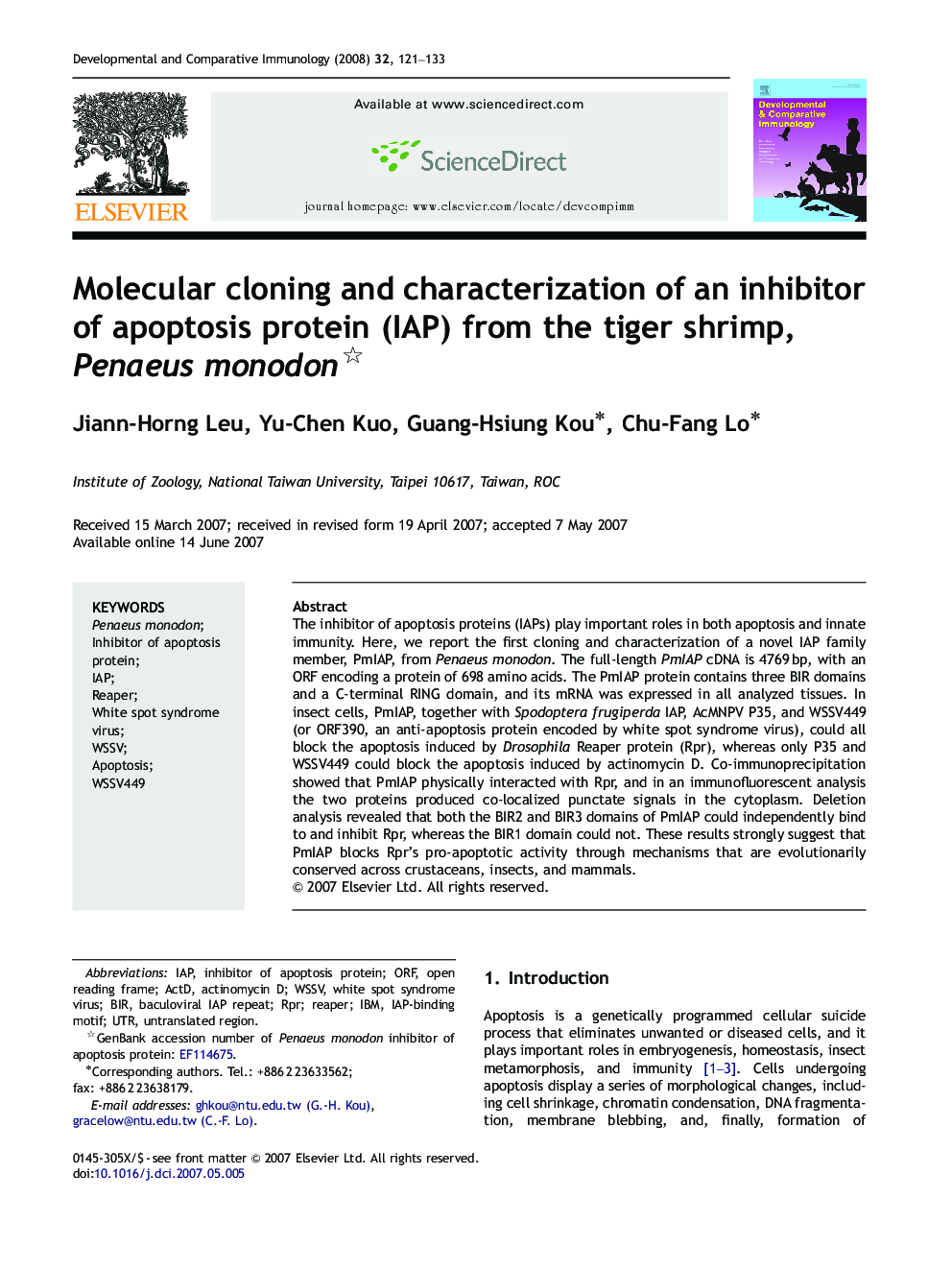| Article ID | Journal | Published Year | Pages | File Type |
|---|---|---|---|---|
| 2430171 | Developmental & Comparative Immunology | 2008 | 13 Pages |
The inhibitor of apoptosis proteins (IAPs) play important roles in both apoptosis and innate immunity. Here, we report the first cloning and characterization of a novel IAP family member, PmIAP, from Penaeus monodon. The full-length PmIAP cDNA is 4769 bp, with an ORF encoding a protein of 698 amino acids. The PmIAP protein contains three BIR domains and a C-terminal RING domain, and its mRNA was expressed in all analyzed tissues. In insect cells, PmIAP, together with Spodoptera frugiperda IAP, AcMNPV P35, and WSSV449 (or ORF390, an anti-apoptosis protein encoded by white spot syndrome virus), could all block the apoptosis induced by Drosophila Reaper protein (Rpr), whereas only P35 and WSSV449 could block the apoptosis induced by actinomycin D. Co-immunoprecipitation showed that PmIAP physically interacted with Rpr, and in an immunofluorescent analysis the two proteins produced co-localized punctate signals in the cytoplasm. Deletion analysis revealed that both the BIR2 and BIR3 domains of PmIAP could independently bind to and inhibit Rpr, whereas the BIR1 domain could not. These results strongly suggest that PmIAP blocks Rpr's pro-apoptotic activity through mechanisms that are evolutionarily conserved across crustaceans, insects, and mammals.
